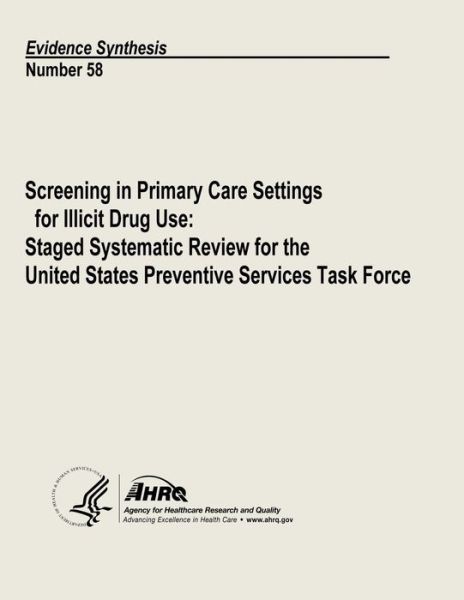
Tell your friends about this item:
Screening for Hiv: Systematic Review to Update the U.s. Preventive Services Task Force Recommendation: Evidence Synthesis Number 95
U S Department of Heal Human Services
Screening for Hiv: Systematic Review to Update the U.s. Preventive Services Task Force Recommendation: Evidence Synthesis Number 95
U S Department of Heal Human Services
Publisher Marketing: The purpose of this report is to update a previous systematic review commissioned by the U. S. Preventive Services Task Force (USPSTF) on screening for asymptomatic HIV infection in nonpregnant adults and adolescents. In 2005, based on the earlier evidence review, the USPSTF recommended screening all adolescents and adults at increased risk for HIV infection (grade A recommendation). The USPSTF based its recommendation on the high yield of screening in these patients, good evidence that standard and rapid HIV screening tests accurately detect HIV infection, and good evidence that identification and treatment of unsuspected HIV infection at immunologically advanced stages of disease with antiretroviral therapy (ART) and other interventions results in marked reduction in risk of progression to acquired immunodeficiency syndrome (AIDS) and AIDS-related clinical events and mortality. Although the USPSTF found ART associated with short-term adverse events and increased risk of long-term cardiovascular events, it determined that estimated benefits greatly outweighed harms. The USPSTF made no recommendation for or against routinely screening for HIV in adolescents and adults not at increased risk for HIV infection (grade C recommendation). Because of the lower prevalence of HIV infection in persons not at increased risk, the USPSTF determined that benefits from screening would be smaller than screening in higher-risk populations, resulting in a close balance between potential benefits and harms, including false-positive results, labeling, anxiety, and adverse events associated with ART and other interventions. Importantly, the USPSTF found insufficient evidence to estimate benefits from screening in persons at less immunologically advanced stages of disease or effects of screening and subsequent interventions on risk of HIV transmission. In 2006, the Centers for Disease Control and Prevention (CDC) issued its revised guideline recommending routine voluntary HIV screening of all persons ages 13 to 64 years, unless the prevalence of undiagnosed HIV infection has been documented to be less than 0.1 percent. The CDC also recommended that testing be performed on an opt-out basis without a requirement for pretest prevention counseling, in order to reduce barriers to screening. A key reason for the differences between the CDC and USPSTF recommendations is evidence showing that 20 to 26 percent of patients with HIV infection report no risk factors, suggesting that any screening strategy based on risk factor identification will miss an important proportion of infected persons. Other reasons for the differences between the CDC and USPSTF recommendations include greater weight placed by the CDC on studies showing reductions in self-reported risky behaviors following diagnosis of HIV infection, acceptance of modeling studies to estimate effects of HIV diagnosis and reductions in risky behaviors on transmission risk, and greater weight placed on studies showing acceptable incremental cost-effectiveness ratios for screening versus no screening in very low-prevalence populations. The USPSTF subsequently commissioned a focused update of its 2005 report with the studies included in the CDC guideline, but found insufficient evidence to change its C recommendation on screening in persons not at higher risk. The USPSTF found methodological shortcomings in the studies showing reduced risky behaviors following HIV diagnosis, which made estimations of reductions in transmission risk unreliable. This report updates the prior USPSTF review on the benefits and harms of HIV screening in nonpregnant adolescents and adults, focusing on key research gaps identified in the earlier review. This report also addresses areas not addressed in the prior USPSTF review, including effects of different screening methods on uptake, CD4 count at diagnosis, linkage to followup care, and harms, in order to help inform optimal screening strategies.
| Media | Books Paperback Book (Book with soft cover and glued back) |
| Released | April 17, 2013 |
| ISBN13 | 9781484142585 |
| Publishers | Createspace |
| Pages | 186 |
| Dimensions | 216 × 279 × 10 mm · 444 g |

































